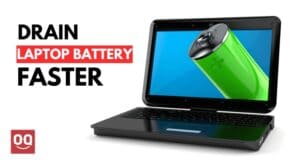A pointing device is a tool that allows the user to interact with a computer by selecting and manipulating objects on the screen. When you move the pointing device or click a button, the pointer on the screen moves or an action is performed. The most common pointing devices are mice and trackballs.
There are two main types of pointing devices: indirect and direct. An indirect pointing device, such as a mouse, uses a cursor to select objects on the screen. A direct pointing device, such as a trackball, touchpad, or stylus, directly selects the object on the screen.
If you are wondering what the most common pointing device on laptops is, you have come to the right place. In this article, we will discuss the most common pointing devices used on laptops.
The most common type of pointing device is a mouse, which is used to move a cursor around on the screen. Computer users use mice to click on icons, select text and scroll through documents.
But there are also so many other pointing devices available that include trackballs, light pens, and joysticks. Laptop users also commonly use trackpads, which are built into the laptop and allow the user to move their finger around to move the cursor. Some newer laptops also have touchscreens, which allow the user to directly interact with what is on the screen.
All these pointing devices can be used to interact with computer programs. Choosing which one to use is often a matter of personal preference. Some people find that they can work more quickly with a mouse, while others prefer the feel of a trackpad. Ultimately, it is up to the individual user to decide which pointing device works best for them.
But according to statistics, the mouse is still the most popular pointing device for laptops. This is likely because it is the most familiar and easy-to-use option for most people. Mice come in a variety of shapes and sizes, so there is sure to be one that fits your hand comfortably.
Different types of computer mice:
There are a variety of computer mice on the market with different prices, shapes, sizes and colors. Some of them are designed for gaming, while others are for general use. Here is the list of different types of computer mice:
1. Wireless Mouse
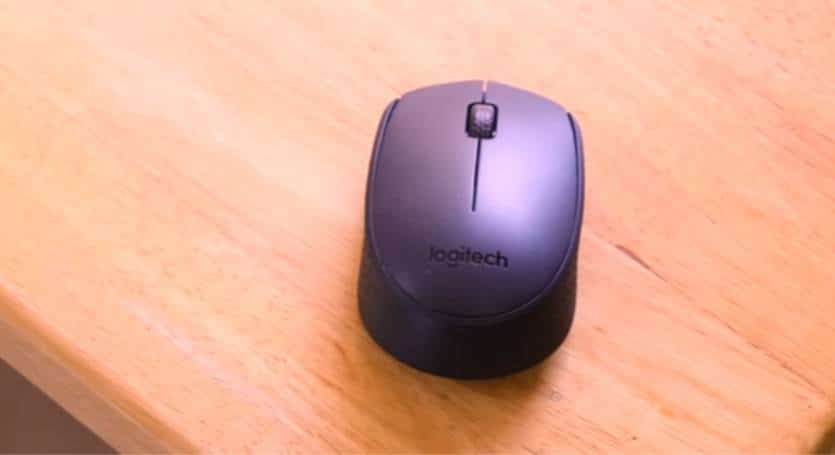
A wireless mouse is a type of computer mouse that uses a radio frequency signal to communicate with the computer. It has become very popular in recent years because it eliminates the need for a mouse cable.
Wireless mice are convenient because they do not require a physical connection to the computer, making them easy to use with laptops and other portable devices. In addition, wireless mice typically have longer battery life than wired models, and they are less likely to create clutter on your desk.
However, wireless mice can be more expensive than wired models, and they may require batteries or an external power source. Additionally, wireless mice can be subject to interference from other electronic devices, which can result in a loss of performance.
2. Ergonomic Mouse
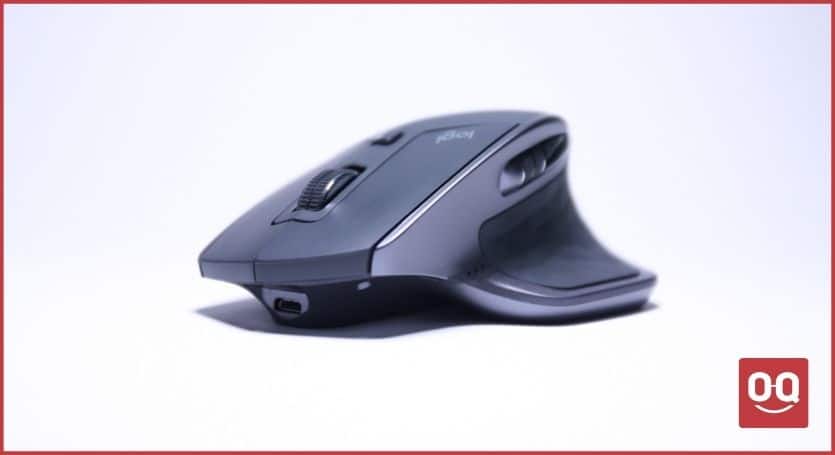
Ergonomic mice are another type of computer mouse that laptop users commonly use as a pointing device. They are designed to reduce strain and fatigue on the hand and wrist.
Unlike a traditional mouse, an ergonomic mouse has a variety of features that make it more comfortable to use for extended periods of time. For example, some ergonomic mice have contoured shapes that fit more naturally in hand, while others have adjustable hand rests that provide support and reduce pressure points.
In addition, many ergonomic mice have scroll wheels or other controls that allow the user to perform common tasks with fewer clicks and less effort.
3. Trackball Mouse
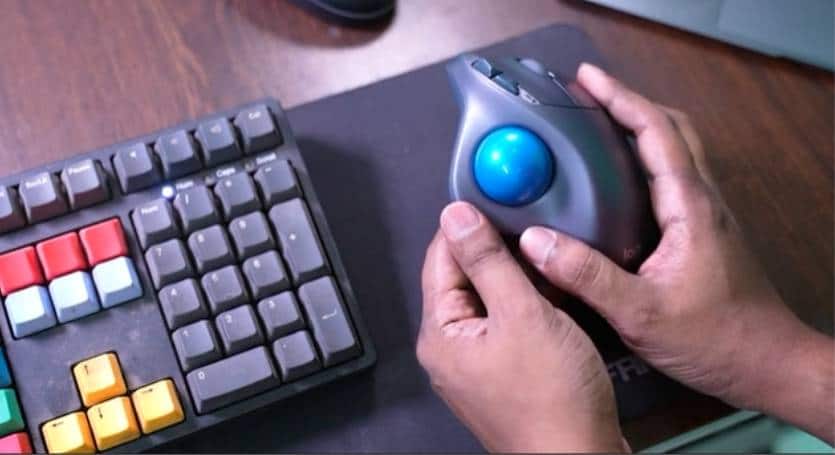
Trackball mice use a ball-shaped object, known as a trackball, to control a cursor on a computer screen. The user rolls the trackball with their thumb, fingers, or palm to move the cursor.
Trackball mice are often used by people who have limited mobility or who find it difficult to use a traditional mouse. Some trackball mice also have additional buttons that can be programmed to perform specific tasks.
While trackball mice are not as popular as they once were, they continue to be used by many people who appreciate their unique design and functionality.
4. Mechanical Mouse
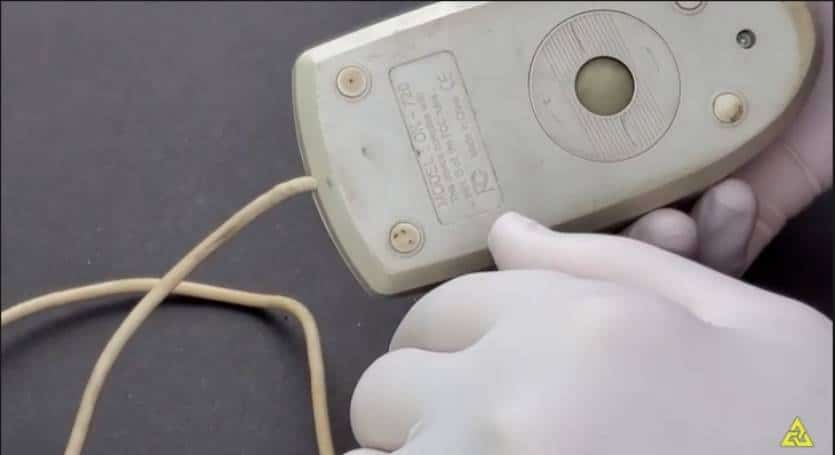
This is the old type of computer mouse that uses a physical mechanism to sense movement. A mechanical mouse typically relies on a small ball that is contained within the mouse. When the mouse is moved, the ball rolls and turns gears that are connected to sensors, these sensors translate the mouse’s physical movement into electrical signals sent to the computer. The friction of the mouse pad plays an important role for these mice.
Mechanical mice tend to be more durable and easier to clean, but they can be more difficult to use on certain surfaces. In addition, mechanical mice tend to require more maintenance than optical mice and can be more susceptible to dust and dirt.
5. Vertical Mouse

The shape of a vertical mouse is quite different from other traditional mice. Vertical mice are designed to reduce wrist strain and promote a more comfortable grip.
Unlike a traditional mouse, which is horizontal, a vertical mouse has a curved body that is meant to be held in an upright position. This design allows the user’s hand to maintain a more neutral position, which can help to prevent pain and discomfort.
6. Foot Mouse

A foot mouse is an alternative to a traditional mouse. It is designed to be operated with one’s feet, freeing up the hands for other tasks. Foot mice typically feature a large trackpad that can be navigated with the feet, as well as a set of buttons that can be activated by pressing down with the toes.
Some foot mice also feature a joystick or other pointing device that can be used for greater precision. While foot mice are not as widely used as traditional mice, they can be useful for those who are disabled by hand.
7. Finger mouse
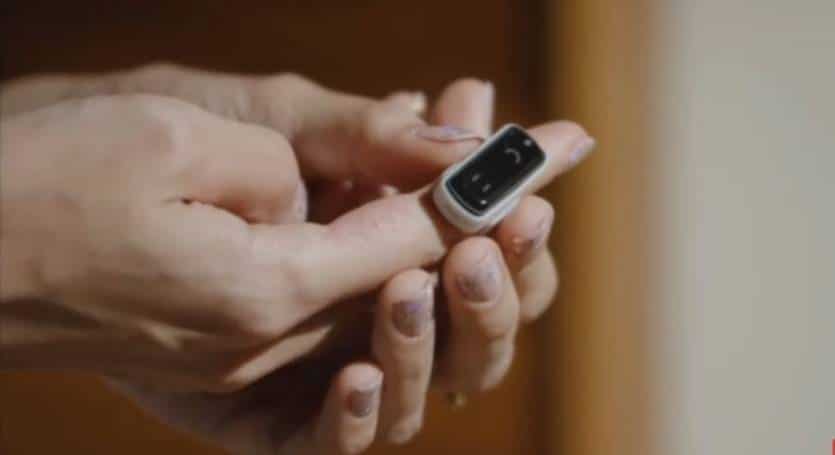
A finger mouse is a small mouse that you have to wear on your finger like a ring. Finger mice usually have two buttons and a scroll wheel. Some models also have a trackball that you can use to move the cursor around the screen.
The finger mouse is an alternative to traditional mice, which are often uncomfortable to use for long periods of time. Additionally, finger mice can be used in tight spaces, such as when travelling on an aeroplane. People who use finger mice often find that they are more accurate than traditional mice since they can be positioned directly under the cursor.
8. 3D mouse
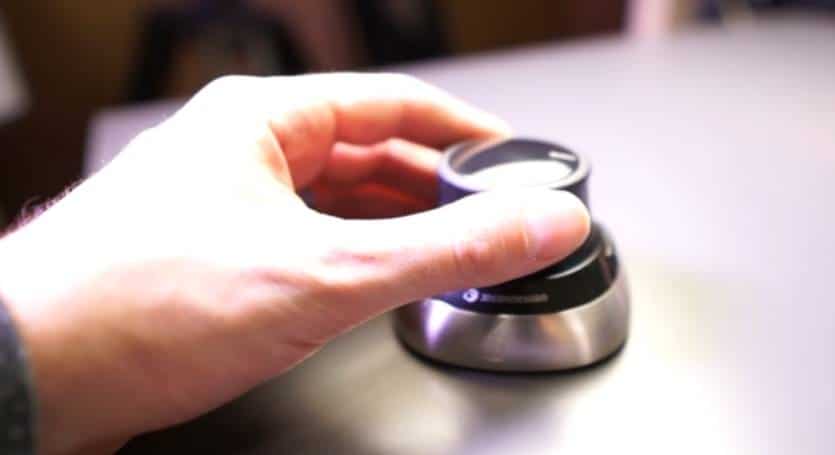
A 3D mouse allows users to control three-dimensional objects on a computer screen. The device looks similar to a traditional mouse, but it has an additional three-dimensional button that can be used to rotate or zoom in on objects.
3D mice are often used in computer-aided design (CAD) and 3D designing programs like Blender, SketchUP, etc , as they provide a more intuitive way to control complex objects. Some gaming mice also feature 3D buttons, which can be used to perform special actions or combos. While 3D mice are not essential for everyday computing, they can be helpful for certain tasks that require precise control.
Is the keyboard a pointing device?
A keyboard is technically a pointing device because it allows you to point to specific characters on a screen. However, most people consider a mouse or trackpad to be the primary pointing device, with the keyboard being used primarily for typing. Nevertheless, the keyboard can be useful for quickly moving the cursor around the screen or selecting text.
For example, you can use the arrow keys to move the cursor one character at a time, or you can hold down the shift key and use the arrow keys to select large blocks of text.
In addition, many keyboards have special keys that can perform common actions, such as opening a web browser or closing a window. As a result, although it is not traditionally thought of as such, a keyboard can be a useful pointing device in certain situations.
Conclusion
If you are a laptop or computer user, chances are you use a pointing device on a daily basis. Pointing devices are essential for interacting with computers, and there are many different types to choose from.
The type of pointing device that is right for you will depend on your needs and preferences. For example, if you have a disability that makes it difficult to use your hands, you may want to consider a pointing device that can be operated with your mouth or feet. On the other hand, if you are a gamer, you may want a device that is specially designed for gaming.
However, the most commonly used pointing device on laptops is the mouse. Mice come in all shapes and sizes, and they can be operated with one hand. If you are looking for a pointing device that is easy to use and reliable, a mouse is a good choice.
We hope that this article has helped you to understand the different types of pointing devices and how to choose the right one for your needs.
Thank you for reading!


